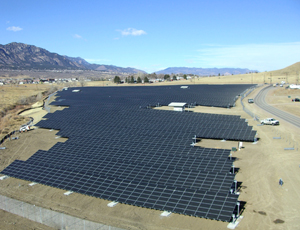
The U.S. Army, aiming to boost its use of renewable energy, such as solar and wind power, is setting up a new task force to help it reach the ambitious goal of deriving 25% of its domestic-use energy from renewables by 2025, up from just 2% now.
The Army estimates it will cost as much as $7.1 billion over the next decade to reach that target, and it is looking to private firms to finance and build the needed new energy projects.
Army Secretary John M. McHugh, who announced the Energy Initiatives Office task force on Aug. 10, said the Army is seeking to attract developers to provide “an economically viable, large-scale renewable-energy infrastructure.”
The task force will begin operation by Sept. 15 and be part of the office of the Army’s assistant secretary for installations, energy and environment.
The Army has 126 renewable projects in place now, says Jonathan Powers, the Army's special adviser on energy. He says that, until now, the Army has had a decentralized approach to renewable-energy projects.
But officials realized that, to attain the 2025 goal, a significant change was needed. He says, “So we created this one-stop shop,” which brings together Army energy specialists from different locations. “And we’re also getting help from the Dept. of Energy,” he adds.
He says Army officials are reviewing about 20 renewables projects “in the hopper” now, “so when we bring them out, they’ll be well scrubbed and ready to go.”
Plans for Bases in Texas, California
On Aug. 8, the Army issued a request for information regarding technologies and projects to make its Fort Bliss, Texas, installation the first major post to achieve net-zero status for energy, water and waste.
The Fort Bliss program could include more than 140 megawatts of power from renewable energy. The Army is seeking information about such options as waste-to-energy, large-scale energy storage and large- and small-scale wind, geothermal and solar power.
In October 2009, the Army entered into a memorandum of agreement with a private team for, potentially, an even larger renewables program: a $2-billion solar-energy installation at Fort Irwin in California.


